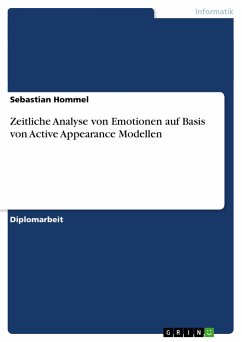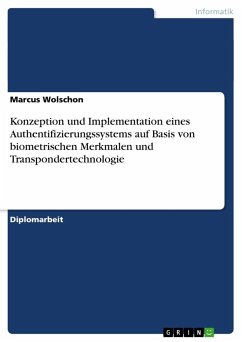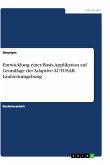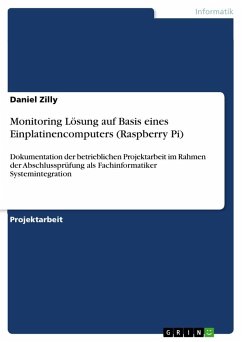Diplomarbeit aus dem Jahr 2010 im Fachbereich Informatik - Angewandte Informatik, Note: 1,7, Technische Universität Ilmenau, Sprache: Deutsch, Abstract: Nowadays machines work for us more and more. Especially in the service sector this is the case. Here it is important to have natural interaction between human beings and machines. The best way to achieve interaction with a machine is by spoken dialogue. Furthermore, gesture and the transmission of emotions are a key point.This work focuses on the approximation of emotional informations and their conversion to a dialogue-system. In this process it is important to develop a system which works stable under realistic conditions.The estimation of emotions is based on parameters of an Active-Appearance-Model (AAM). These parameters were analysed by a Support-Vector-Machine (SVM). Thereby, the SVM performs a regression of the human mimic to an unidimensional affect space.In this thesis an person specific mean face is used to remove individual differences between persons. This is a set of the parameters of an AAM for one person. This set of data is estimated over time.For correct interpretation of the estimated emotion it is necessary to know if the emotion is caused by the dialogue-system. An estimator of attention was created to analyse this. This estimator informs about the attention and the point of interest. This estimation is based on the head positions or optional on the viewing direction.These were calculated by Multilayer-Perceptrons (MLPs) from the local form-parameter of an AAM.An addition of the attention estimator is a detection of YES and NO .For all applied methods statistical analyses were required.These statistics were calculated by using an adaptive and recursive estimation for an efficient calculation.
Hinweis: Dieser Artikel kann nur an eine deutsche Lieferadresse ausgeliefert werden.
Hinweis: Dieser Artikel kann nur an eine deutsche Lieferadresse ausgeliefert werden.








